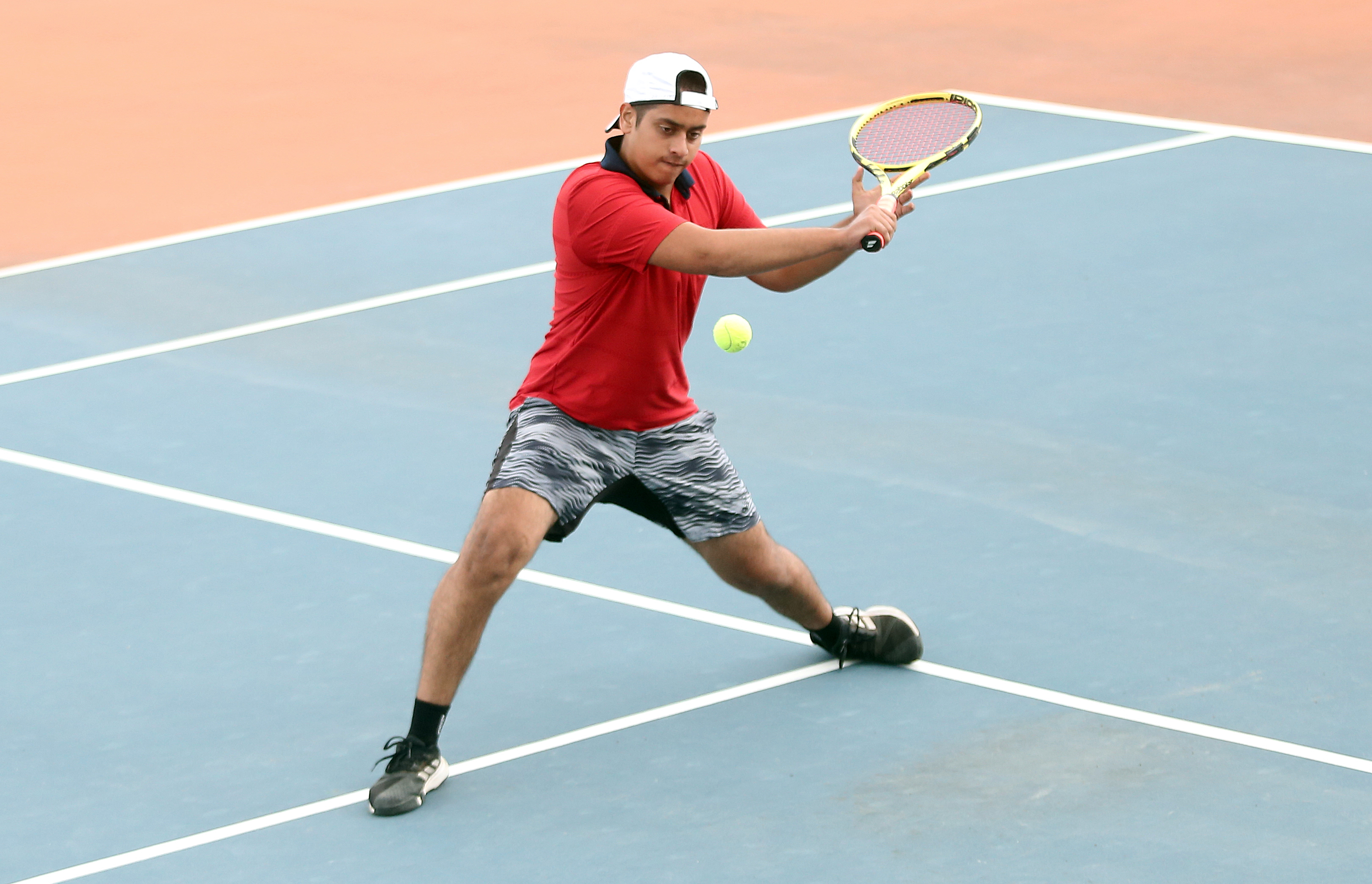It was at a newly laid tennis court at St Xavier’s School, Jawalakhel, that Pranav Khanal first came across tennis. His father, a national-level squash player, had taken him there to watch a game.
“I was eight then,” recalls now 20-year-old Khanal who won a bronze for Nepal at the 13th South Asian Games held in Kathmandu in 2019.
The 12-year-long journey hasn’t been an easy one, despite immense support from his family members, especially his father. “My father had a dream of making his son a true champion,” says Khanal.
Most of the difficulties he faced have been part and parcel of the sport in Nepal, where cricket and football dominate in everything sphere, from followers to finance. There are only a handful of tennis tournaments in Nepal—around five or six in a year—and because of Covid-19, they too have been halted.
At 11, Khanal took part in his first international tournament in Vietnam as a junior national player, and he has since played almost two-dozen tournaments. He debuted in the senior side in the 2018 edition of the Asian Games in Indonesia. But despite being the national champion, he is yet to secure a place in the world ranking—not many tournaments are organized in Nepal.
Tennis is an expensive sport, and if you want to become a national player, you have to come to the association on your own. There is no scouting. “Only three cities have tennis facilities—Butwal, Pokhara, and Kathmandu. Tennis would have a brighter future if the authorities scouted from all over Nepal,” Khanal adds.

“Tennis is not a sport where you see overnight success. You have to work hard at multiple levels, at least for a decade.” This is the lesson he wants to pass on to aspiring tennis players. “Continue to give your 100 percent, be patient, and you will see success for sure.”
Patience is important for Nepali tennis players, especially as the sport in Nepal is resource-poor—players typically either go abroad or leave the sport when they need to choose a career.
“We have a limited number of players with little competition among them. There are also plenty of off-field deterrents,” he says. As we don’t have a salary system for tennis players, either they have to rely on the club’s allowance or sponsorships. But sponsorship is hard to find because Nepali tennis doesn’t have many spectators.
The Covid-19 pandemic has had a telling effect on the sport with the cancellation of almost all events.
“Tennis has one of the oldest sports organizations in Nepal: The All Nepal Lawn Tennis Association, whose events, for a long time, were only reserved for the elites,” he says.
ANLTA was established in 1956 but it could hold its first exhibition tournament only in the early 1980s.
Thankfully, the sport is changing for the better. Since 2007, the association has been organizing regular tournaments. A change in leadership in 2015 has also accelerated the sport’s development, says Khanal.
Infrastructure has also improved. Before 2018, Nepal didn’t have a hard court—and most international tournaments are played on hard surfaces.
“So until now, you could say we had no proper training,” Khanal says. Besides the private courts, the association has eight hard courts now, where national players can practice for free. “It is a huge boost,” he adds. Also, tennis academies have emerged to help players hone their talents and find opportunities.
These days, more parents are encouraging their children to take up tennis. For practices and tournaments, players need to travel abroad, sometimes at their own expense, and parents often accompany them. “The players need plenty of moral and psychological support in this sport,” Khanal says.
He says he will play so long as he is fit and afterwards, he will inspire and coach juniors at his own dream academy. “No matter what, I will be associated with tennis and will work to establish a tennis culture in the country,” he concludes.












